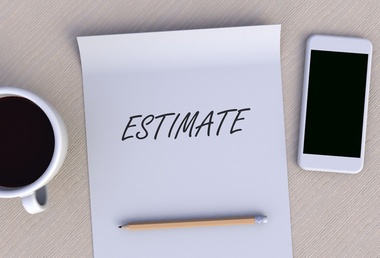When you are an employee, your employer withholds taxes from every paycheck and sends the money to the IRS. But when self-employed or earning income other than a salary, you need to pay estimated taxes each quarter. What kind of income might be subject to quarterly payments? Take the following, for example:
- Interest income.
- Dividends.
- Gains from the sales of stock or other assets.
- Earnings from a business.
- Alimony.
If at filing time you haven’t paid enough income taxes through withholding or quarterly estimated payments, you may have to pay a penalty for underpayment.
When are estimated taxes due?
The IRS doesn’t break the tax year into four three-month quarters. The first quarter is Jan. 1 to March 31, but the second quarter is only two months long — April 1 to May 31. The third quarter is three months — June 1 to Aug. 31 — and the fourth quarter is the final four months of the year.
The installment payments are due on April 15, June 15, Sept. 15 and Jan. 15 of the following year, with adjustments made for weekends and official holidays.
How to determine whether you need to make quarterly estimated taxes:
- Do you owe less than $1,000 in taxes for the tax year after subtracting your federal income tax withholding from the total amount of tax you expect to owe this year? If yes, you’re safe; you don’t need to make estimated tax payments.
- Do you expect your federal income tax withholding — plus any estimated taxes paid on time — to amount to at least 90 percent of the tax that you will owe for this tax year? If yes, you’re clear — you don’t need to make estimated tax payments.
- Do you expect your income tax withholding to be at least 100 percent of the tax on your previous year’s return? If yes, you don’t need to make estimated tax payments.
But if none of these is the case, then you must make estimated tax payments. To avoid a penalty, your total tax payments — estimated plus withholding — during the year must satisfy one of the requirements just covered. Note that these are just general guidelines, and there may be other reasons that allow you to avoid estimated payments or require you to file them.
And the safest option to avoid underpayment penalties is to aim for 100 percent of your previous year’s taxes; think 110 percent of your previous year’s taxes to satisfy the safe-harbor requirement. If you do this, you’re likely not to have to pay an estimated tax penalty, no matter how much tax you owe with your return. (This may be especially relevant for those with high incomes.)
But — if you expect your income this year to be less than last year’s and you think you will owe at year-end, you can choose to pay 90 percent of your estimated current year’s tax bill.
Now here’s the next question — how do you pay your estimated taxes? Should you pay in equal amounts? Usually it’s in four equal installments. But you might end up with unequal payments if:
- You had your previous year’s overpayment credited to your current year’s estimated tax payments.
- If you don’t figure your estimated payments until after April, when the first one is due.
- If you suddenly — happily! — make a lot of money in one quarter.
Basically, there are no good reasons to pay penalties. Follow the rules so you don’t have to pay extra to the piper come April. Your best bet is to talk with us about your financial situation to make sure you are paying the right amounts at the right times.


Recent Comments